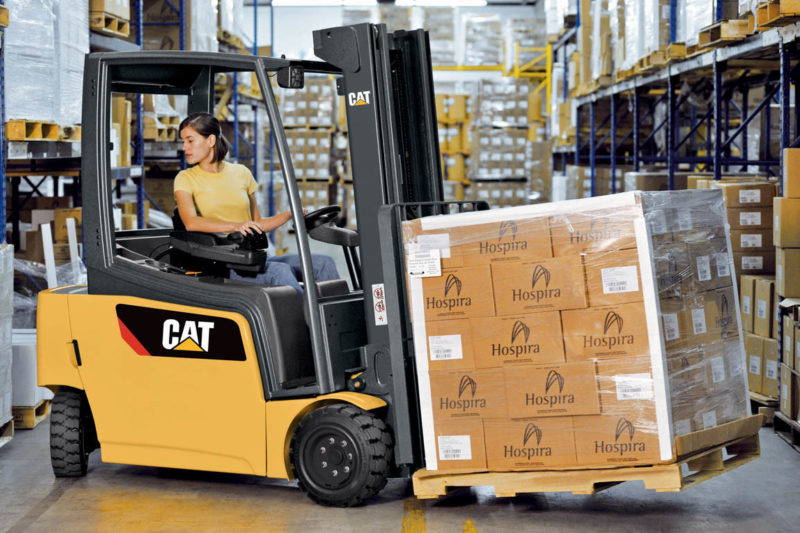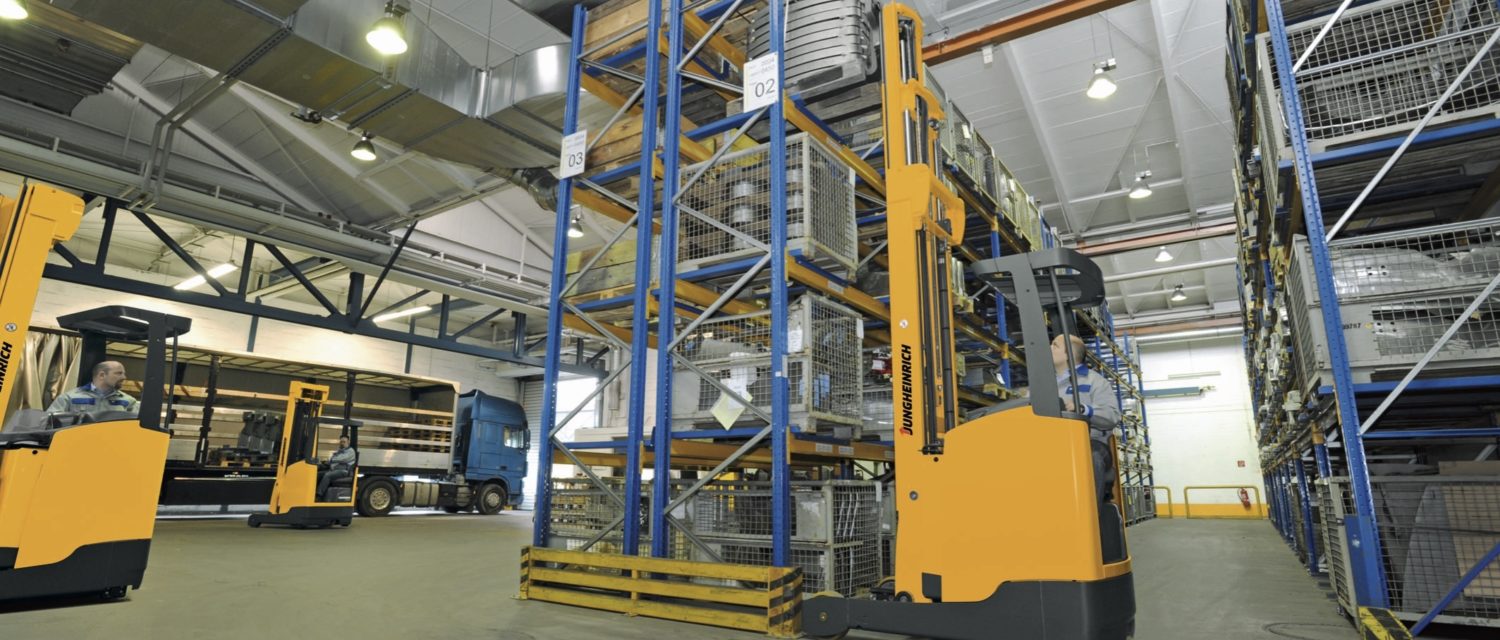Improve Forklift Efficiency to Improve Warehouse Efficiency

Consumers are moving more and more of their purchases online, which means that the need for inventory storage is skyrocketing as well. Not only do warehouses need to manage more inventory, they need to manage more types of inventory. More SKUs need to find their place on the warehouse shelving racks, and warehouses need to pick and ship these SKUs quickly.
Warehouses can take many steps to achieve these efficiency goals. One of these strategies is to improve the efficiency of their forklifts. Taking the humble forklift and turning it into a tool in the task to manage inventory well can save warehouses time and money. Here are a few ways to do just that.
[CUTOFF]Keep your forklift’s tires inflated.
Every time a forklift requires fueling, a warehouse must spend time and money to take the forklift offline and fuel it. Greater fuel efficiency means more time to use the forklift to achieve your warehouse goals.
In order to improve the fuel usage of your forklift, keep its tires properly inflated. Under or over inflated tires can use more fuel, as well as pose certain safety risks. Checking tire pressure before every shift, and replacing tires regularly can keep them properly inflated and in top working order.
Maintain your forklifts properly.
Tire maintenance is only the tip of the maintenance iceberg when it comes to forklifts. If you want to get the most use out of your forklift, you need to keep up with all of the necessary maintenance tasks. From checking the entire forklift before every shift to keeping up with routine maintenance like filter replacements, you can catch big problems while they are still minor. As a result, you can minimize costly downtime for each forklift you own and make sure that your machines spend as much time as possible out on the warehouse floor helping to manage your inventory.
Train your forklift operators.
One of the most common causes of forklift accidents in the workplace is an untrained or undertrained operator. Without proper training, operators can miss changes in their environment, not know how to respond to emergencies, or fail to properly operate their machine, thus leading to accidents like collisions with warehouse shelving racks.
In order to avoid these issues, you should make sure that each forklift operator is thoroughly trained for each machine they operate. With the right training, you can minimize accidents and maximize the ability you have to use your forklifts around the warehouse.
Maintain your warehouse floors.
If you want to improve your forklift efficiency, you can start with your warehouse floors. Damaged, uneven, or pitted floors pose a practical and a safety hazard to forklifts. The machines must slow down to move over cracks or pits in the floor. Loads may tip on uneven surfaces. Dips and pits can damage tires, leading to breakdowns and downtime for your forklift. Keep your floors in good condition in order to avoid these forklift-busting issues.
Purchase and use appropriate forklift attachments.
Forklift attachments can contribute to the efficiency of your machines. For example, a sideshifter can move pallets side to side or straighten loads on the warehouse shelving racks without moving the forklift. A fork positioner can change the forks’ positions in order to handle pallets and loads that are not standard sizes or shapes. Choosing attachments such as these can improve the speed and accuracy with which you use your forklift, and improve overall safety to avoid costly and time-consuming accidents.
Ask your forklift operators for insights.
Your forklift operators are the ones using your machines on a daily basis. They almost certainly have insights on how to improve the efficiency of these machines. Check in with them to learn about problem areas in the warehouse and possible solutions. Maybe your warehouse racking shelves are too close together. Maybe your loading docks are too crowded. Or maybe you have too much foot traffic through your aisles. Regardless of the issue, take their thoughts into consideration and take steps to address their areas of concern.
Check the aisles between your warehouse shelving racks.
In order to work effectively, forklifts must be able to move comfortably between your warehouse shelves. Too narrow, and they can get stuck or have trouble maneuvering. This can lead to bumps and collisions, broken shelving or dropped inventory. Too wide, and you lose out on storage space you need to manage all of your SKUs.
When improving efficiency within your warehouse, check your aisle widths. Make sure you have the right width for your forklifts. You may even want to consider investing in narrower machines if you feel as if the improved storage space will offset the cost of buying a forklift. The key is to balance your forklifts’ need for space with your need for shelving.
Know when not to use a forklift.
Not every scenario within your warehouse requires the use of a forklift. Sometimes, another tool or another type of forklift will work better. Identifying these scenarios and implementing the proper tools can help you to save time and money on the warehouse floor. Forklifts solve a lot of problems, but they are not the answer to everything you deal with in the warehouse.
If you need warehouse solutions or want to find the right forklift, reach out to Darr Equipment. We can help you find the right forklift, offer comprehensive maintenance plans to keep your machines in top working order, assist with fleet management, and more. With the right machines, and the right strategies, you can improve the efficiency of your forklifts and your warehouse to handle your company’s increasing needs.
